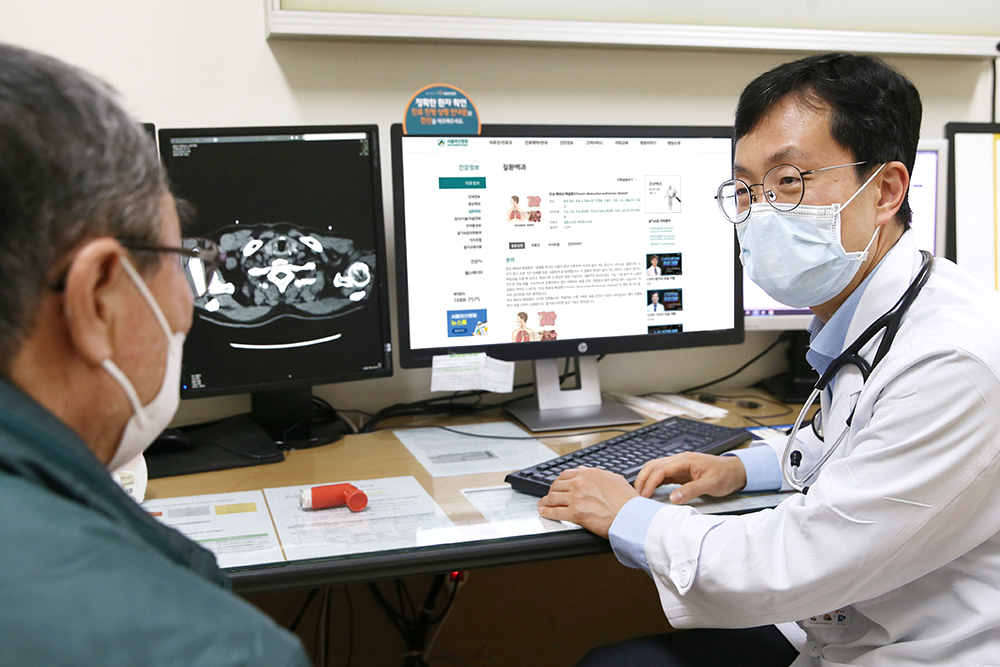
AMC research team develops an AI algorithm predicting lung function with over 90% accuracy

▲ (from the left) Professor Sei Won Lee and Professor Namkug Kim
Artificial intelligence (AI) has taken a significant step forward in predicting lung function by learning from low-dose chest CT and lung function test results. The AI algorithm developed by a research team led by Professor Sei Won Lee of the Division of Pulmonology and Critical Care Medicine and Professor Namkug Kim of the Department of Convergence Medicine of Asan Medical Center can predict lung function with over 90% accuracy.
The team trained the AI algorithm using low-dose chest CT and lung function test results from 16,148 individuals who underwent health examination from 2015 to 2018. This algorithm is capable of identifying patients with decreased lung function based on CT scans. Pulmonary function tests include two primary measurements: forced vital capacity (FVC), which is the amount of air that can be forcefully exhaled after a full inhalation, and forced expiratory volume in one second (FEV1), which is the amount of air that can be forcefully exhaled in one second. The AI developed by the research team predicted both measurements with 93% and 90% accuracy, respectively. Moreover, the AI was found to predict the high-risk indicator based on both measurements (FEV1/FVC) with approximately 85% accuracy.

▲ Professor Sei Won Lee consulting a chronic obstructive pulmonary disease(COPD) patient
Professor Namkug Kim noted, "Studies on anatomical features of lungs in CT images and their correlation with lung function have been conducted before. However, this study is significant because studies using AI algorithms to predict lung function from CT images alone through deep learning are still in their early stages."
Professor Sei Won Lee further added, "Early detection is critical in chronic obstructive pulmonary diseases to delay disease progress as much as possible by modifying lifestyle habits such as smoking. We will continue researching diagnostic methods that can quickly detect at-risk patients with no specific initial symptoms."
The research findings have been published in the prestigious radiology academic journal, 'Radiology(IF=29.146).'
